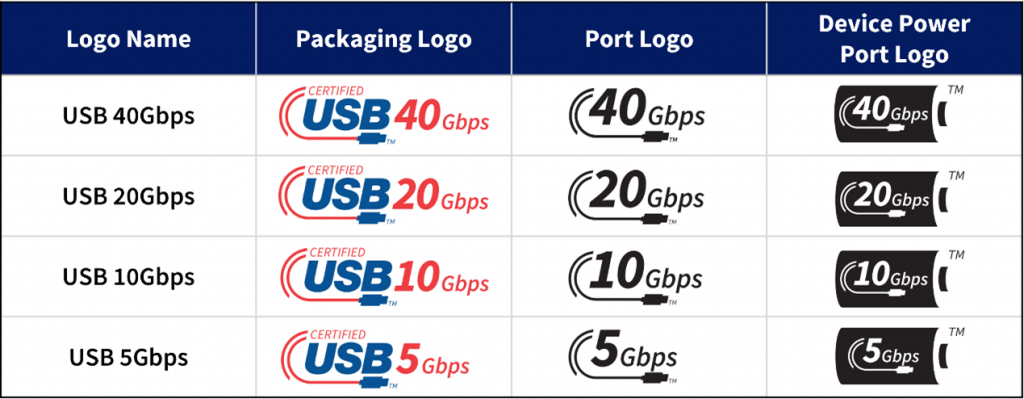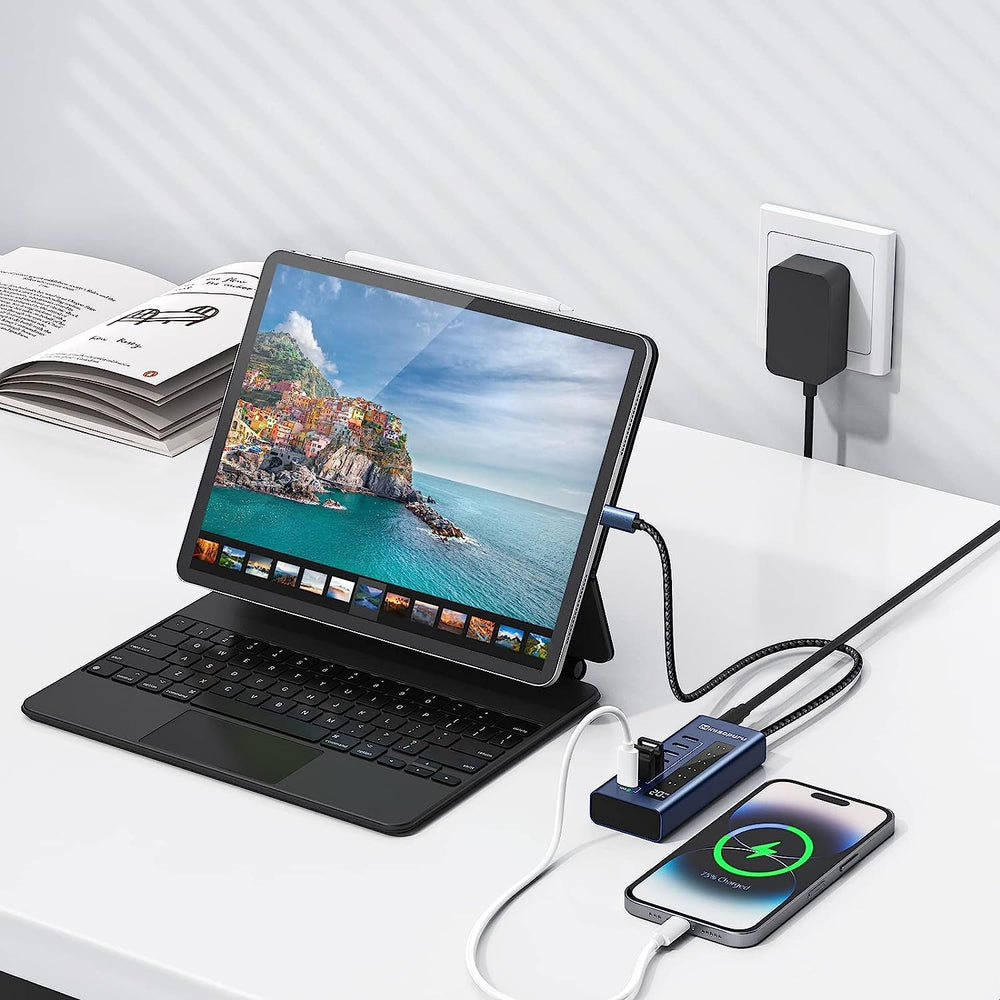Universal Serial Bus is the full name of USB transmission technology. Since 1996, it has become one of the evolving consumer electronic communication technologies and has become the dominant technology in the field of consumer electronics. At the beginning, USB was designed to provide a 12Mbps transmission rate for personal computers through a standardized connector. With the development of USB4, it can now provide an ultra-high transmission rate of 40Gbps, which means that the transmission rate of USB has grown 3333 times in 27 years! In addition, the convenience, speed, power and scalability of USB have also made the USB standard surpass the original intention of connecting peripheral devices to personal computers and become the main standard for computer systems, mobile and consumer electronics.
As technology changes and innovates, technical specifications should continue to be simplified to guide end users to more clearly distinguish the relevance of its functions and advantages; with the launch of SuperSpeed USB in 2007, the transmission rate has increased from the original 0.48Gbps of USB 2.0 to 5Gbps of USB 3.0. At that time, it was easy to distinguish the difference between the USB 2.0 and USB 3.0 logos. Now consumers will have three versions of SuperSpeed USB and USB4. From now on, it will be difficult to distinguish the true performance by the "SuperSpeed" logo alone. Therefore, USB-IF has recently released a new logo and product packaging usage guide to unify and simplify the huge "brand" image of USB.
New USB logo to indicate performance
In the future, you will see the updated unified logo on USB-related products and packaging. The USB-IF logo is moving away from the previous form of "showing the specification version to consumers", such as USB 3.2 (SuperSpeed USB) and USB4®.
USB-IF knows that consumers care not about the version number of the technology, but the actual performance of the product. This change is very welcome to users. Compared with the version number, consumers are more interested in the functions and features of the product and hope to get this information directly through the logo. In addition, it will eliminate the general public's view that only the latest version (USB4) is the best. In fact, 5Gbps (USB 3.0) is enough for some applications; the performance and power of USB Type-C® products vary depending on the design and application. Users need to clearly understand their performance from the appearance in order to make correct consumer behavior.
New logos for USB Type-C cables are also launched. Cable logos must show their charging power and data transmission speeds. Not only 40Gbps, but also their power transmission capabilities from 60W to 240W must be listed. In addition, the High-Speed USB logo (USB 2.0) will not be affected and you will continue to see this logo on products. After all, USB 0.48Gpbs looks inconspicuous and 480Mbps is easy to cause confusion.
USB transmission performance display for Host and Device
There are four transfer rates in the USB4® and USB 3.2 specifications—40Gbps, 20Gbps, 10Gbps, and 5Gbps. All products must clearly communicate their product capabilities in product packaging, advertising, and any other marketing materials.

Table 1: New USB logos for Host and Device
Transmission performance representation for USB Type-C cables
In order to allow consumers to quickly identify the cable, USB-IF has designed a new cable logo that will indicate the maximum transfer rate it supports and the maximum power it can carry.

Table 2: New USB logo for USB Type-C cables
Conclusion
The article highlights the evolution of USB technology from 1996, increasing from 12Mbps to 40Gbps with USB4. To help consumers understand performance better, the USB Implementers Forum (USB-IF) has introduced a new logo that focuses on actual performance rather than version numbers. This includes clear indicators of data transfer speeds and power capabilities for USB Type-C cables, while the High-Speed USB logo will remain unchanged. The goal is to simplify consumer understanding and emphasize functionality. We believe that the new logos and marks will help consumers buy the right products more quickly and make related promotional materials easier to read. Overall, these changes are very positive.

